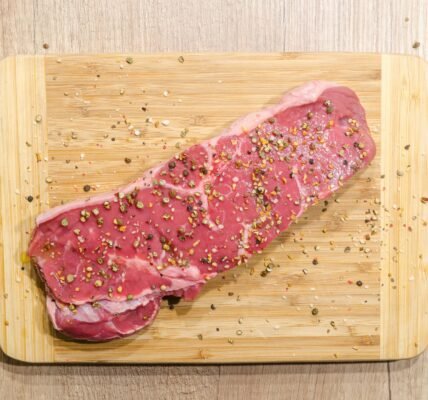Work trouser, also known as work pants, are designed to provide both comfort and durability for a variety of occupational tasks. Whether you’re a construction worker, mechanic, or warehouse worker, the right pair of work trousers can make a significant difference in your daily routine. In this comprehensive guide, we’ll explore the different types of work trousers, their key features, and how to choose the perfect pair for your needs.
Types of Work Trousers
- Cargo Trousers: Cargo trousers are characterized by their large, cargo pockets on the legs, providing ample storage space for tools, equipment, and personal items. They are popular among tradespeople and outdoor enthusiasts.
- Bib Trousers: Bib trousers, also known as overalls, feature a bib section that connects to the pants, offering additional coverage and protection for the torso. They are commonly worn by farmers, mechanics, and construction workers.
- Utility Trousers: Utility trousers are versatile work pants that often have multiple pockets for carrying tools and supplies. They are suitable for a wide range of occupations, including manufacturing, maintenance, and landscaping.
- Flame-Resistant Trousers: Flame-resistant trousers are designed to protect workers in hazardous environments where there is a risk of fire or exposure to high temperatures. They are commonly used in industries such as oil and gas, firefighting, and manufacturing.
- Water-Resistant Trousers: Water-resistant trousers are ideal for outdoor work in wet conditions. They are often treated with a waterproof coating or made from materials that repel water.
Key Features of Work Trousers
- Durability: Work trousers should be made from durable materials that can withstand wear and tear. Look for fabrics like cotton, polyester, nylon, or blends that offer both strength and comfort.
- Comfort: Work trousers should fit comfortably and allow for a full range of motion. Consider factors such as the waistband, inseam, and rise to ensure a proper fit.
- Pockets: The number and placement of pockets are important considerations for work trousers. Choose a style with pockets that are suitable for carrying your tools and supplies.
- Reinforcements: Look for work trousers with reinforced areas, such as knees and seat, to provide extra durability in high-wear areas.
- Ventilation: If you work in hot environments, consider work trousers with ventilation features like mesh panels or vents to help keep you cool.
Choosing the Right Work Trousers
- Consider Your Occupation: The type of work you do will determine the specific features you need in your work trousers. For example, if you work outdoors in wet conditions, you’ll want water-resistant trousers.
- Think About Comfort: Work trousers should fit comfortably and allow you to move freely. Try on different styles and sizes to find the best fit for you.
- Pay Attention to Durability: Look for work trousers made from durable materials that can withstand the demands of your job.
- Consider Safety Features: If you work in a hazardous environment, choose work trousers with safety features like flame resistance or water resistance.
- Check for Pockets and Storage: Make sure the work trousers have enough pockets and storage space for your tools and supplies.
Popular Work Trousers Brands
There are many reputable brands that offer high-quality work trousers. Some popular options include:
- Dickies: Known for their durable and affordable workwear.
- Carhartt: Offers a wide range of work trousers for various industries.
- Duluth Trading Company: Specializes in comfortable and functional workwear.
- Red Wing: Known for their high-quality work boots and apparel.
- Ariat: Offers workwear designed for agricultural and outdoor workers.
Additional Tips
- Care for Your Work Trousers: Follow the care instructions on the label to maintain the quality and durability of your work trousers.
- Consider Customization: Some workwear brands offer customization options, allowing you to personalize your trousers with your company logo or initials.
Frequently Asked Questions
What are the different types of work trousers?
Work trousers come in various styles, including cargo trousers, bib trousers, utility trousers, flame-resistant trousers, and water-resistant trousers. Each type has specific features and is designed for different occupational needs.
What materials are work trousers typically made from?
Work trousers are often made from durable materials like cotton, polyester, nylon, or blends of these fabrics. These materials offer a combination of strength, comfort, and durability.
How do I choose the right size of work trousers?
Refer to the size chart provided by the manufacturer and measure your waist and inseam to determine the appropriate size. It’s also important to consider your desired fit (e.g., loose or slim) when selecting work trousers.
What are some key features to look for in work trousers?
Key features to consider include durability, comfort, pocket configuration, reinforcements (e.g., knee pads), ventilation, and any specific safety requirements for your job.
Can work trousers be customized?
Some workwear brands offer customization options, allowing you to personalize your trousers with your company logo, initials, or other details.
How should I care for my work trousers?
Follow the care instructions on the label to maintain the quality and durability of your work trousers. This may include washing them in cold water, using a gentle detergent, and avoiding high heat drying.
What are some popular brands of work trousers?
Popular brands of work trousers include Dickies, Carhartt, Duluth Trading Company, Red Wing, and Ariat. Each brand offers its own unique styles and features.
Can I find work trousers that are both stylish and functional?
Yes, there are many work trousers that combine style and functionality. Look for brands that offer modern designs and durable materials.
Are there work trousers specifically designed for women?
Yes, many brands offer work trouser designed to fit women’s bodies. These trousers often have tailored features and may include additional pockets or reinforced areas to suit specific needs.
Check for Safety Standards: If you work in a regulated industry, make sure your work trouser comply with relevant safety standards.
By choosing the right pair of work trouser, you can enhance your comfort, productivity, and safety on the job. Consider your specific needs and preferences when selecting work trouser to ensure you find the perfect fit for your lifestyle.
To read more, click here.




